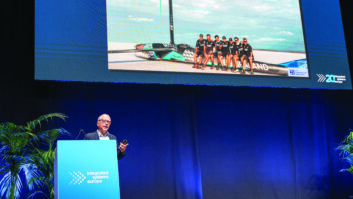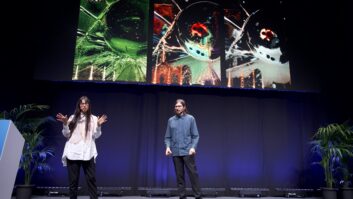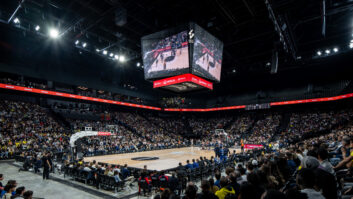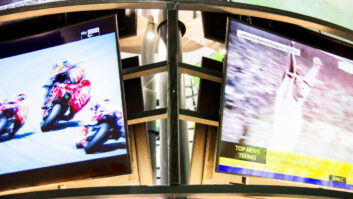The concept behind the new design was to have a decentralised system where all the equipment is as close to its application as possible. Providing the solution was an all-digital audio network and control system – said to be the first of its kind in Japan – comprising seven Digigram ES881v2 and two Digigram ES16161v2 AES/EBU to EtherSound interfaces, which deliver audio signal distribution around the stadium. AES/EBU digital signages are outputted from the console to the ES16161v2 (via a Yamaha DME programmable DSP unit) and then distributed to equipment racks located in seven different zones throughout the stadium using ES881v2. From there the signal is sent to the power amplifiers and the Dolby Lake processors handling loudspeaker management.
Among the many noteworthy features of the installation is the utilisation of ring topology for fail-safe redundancy in the case of accidental system failure. As a result, whenever EScontrol (the dedicated EtherSound software interface from Digigram installed on the main PC in the control room) detects an error, it triggers an automatic alert from the GPIO to notify the operators. The set-up also makes use of a transmission system that uses fibre-optic gigabit cables.
“EtherSound is perfectly suited for use over fibre-optic cable,” observed Bestec’s Masaki Hara. “Furthermore, it enables us to use multi-purpose network switches using the IEEE802.3 standard, which means we can use gigabit fibre-optic to connect between network switches and to transmit audio and control data with no interference (thanks to VLAN networks) over a single fibre-optic cable. This ability to transmit both audio and control data over the same cable saves a huge amount of cabling costs – not to mention time and energy – and is only limited by the number of channels you want to transmit. However, given that EtherSound can support up to 64 bidirectional channels of audio per cable, this is rarely an issue.”
Hara added that the whole system “performed flawlessly during the entire two weeks of the World Athletics Championships, despite some challenging weather conditions including stifling heat and rain. We were all very pleased!”







